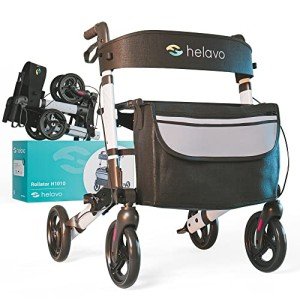Understanding Adjustable Height Walkers: A Comprehensive Guide
Adjustable height walkers have ended up being a vital mobility aid for people needing assistance for walking. They offer stability, support, and liberty, enabling users to preserve their independence. In this blog post, we will explore the different features, benefits, and considerations involved in selecting the ideal adjustable height walker. Additionally, we'll offer responses to often asked questions and present a comparative table of some popular designs readily available in the market.
What is an Adjustable Height Walker?
An adjustable height walker is a mobility aid that can be tailored to fit the user's height. These walkers usually include a set of legs that you can lengthen or shorten, enabling for a more comfortable and ergonomic walking experience. The adjustability not just accommodates users of varying heights but also permits changes to be made as the user's needs change gradually.
Key Benefits of Adjustable Height Walkers
- Customization: The primary benefit is the capability to tailor the walker according to the user's needs. This is crucial for convenience and efficient support.
- Stability and Balance: Walkers provide significant stability for users, decreasing the threat of falls. The broader base supplies much better balance compared to other mobility help like canes.
- Toughness: Most adjustable height walkers are made from sturdy materials like aluminum or steel, guaranteeing they can withstand day-to-day use.
- Assistive Features: Many designs feature additional features such as hand grips, integrated seats, and storage compartments, making them complex mobility aids.
- Portability: Many adjustable height walkers can be quickly folded for transport, making them hassle-free for users who take a trip regularly.
Choosing the Right Adjustable Height Walker
When selecting an adjustable height walker, several aspects require to be considered:
1. Height Adjustability
- Make sure the walker can be adapted to fit the user's height. A lot of walkers will indicate the height range they accommodate.
2. Weight Capacity
- Check the optimum weight limitation to ensure the walker can support the user safely.
3. Material
- Look for walkers made from lightweight yet durable materials like aluminum. Steel walkers tend to be stronger but can be much heavier.
4. Wheels versus No Wheels
- Some walkers include wheels on the front legs, enabling simpler movement. Choose whether Euro-Style Walker wheeled or non-wheeled walker best fits the user's needs.
5. Additional Features
- Think about included features such as folding capability, a seat for resting, or built-in storage for essentials like a water bottle or personal products.
6. User Comfort
- Make certain the grips are comfortable. Ergonomic designs assist lower strain on wrists.
7. Cost
- Adjustable height walkers been available in different rate ranges. Always weigh your options based upon spending plan and needed features.
Popular Models of Adjustable Height Walkers
Here is a relative table of some popular adjustable height walkers that have actually gotten acclaim for their efficiency and features:
| Model Name | Height Range (inches) | Weight Capacity (lbs) | Material | Wheels | Seat Option | Cost Range |
|---|---|---|---|---|---|---|
| Drive Medical Nitro | 30 to 37 | 300 | Aluminum | 4 (front) | Yes | ₤ 150 - ₤ 200 |
| Medline UltraLight | 30 to 37 | 300 | Aluminum | 4 (front) | No | ₤ 100 - ₤ 150 |
| Nova Zoom 12 Walker | 31 to 36 | 300 | Aluminum | 4 (front) | Yes | ₤ 135 - ₤ 180 |
| Invacare Walker | 30 to 36 | 250 | Steel | No | No | ₤ 90 - ₤ 120 |
| Hugo Mobility Walker | 32 to 39 | 300 | Aluminum | 4 (front) | Yes | ₤ 120 - ₤ 160 |
Frequently Asked Questions (FAQ)
Q1: How do I adjust the height of an adjustable height walker?
A: Most walkers include a simple push-button mechanism or a screw adjustment that enables you to change the height rapidly. Constantly refer to the manufacturer's directions for in-depth details.
Q2: Can you utilize an adjustable height walker on different surfaces?
A: Yes, adjustable height walkers can be utilized on different surfaces, consisting of inside your home and outdoors. Nevertheless, some designs with smaller sized wheels are better suited for smooth surfaces.
Q3: Are there walkers that can convert to rollators?
A: Yes, certain models can be quickly converted from a standard walker to a rollator, using increased versatility when it comes to mobility help.
Q4: How do I know if a walker is the right size?
A: When standing directly with your arms relaxed on your sides, the top of the walker must be at the height of your wrists. This ensures a comfortable position while walking.
Q5: Is it safe to use a walker with wheels?
A: Yes, walkers with wheels are created for safety and stability, but users need to beware and ensure the walker is in great condition and suitable for their walking capability.
Adjustable height walkers are important mobility aids that can improve the quality of life for those needing extra support while walking. They not just supply safety and stability however also enhance independence and self-confidence. By understanding the features, advantages, and crucial considerations in selecting the best walker, users can make educated choices that best suit their needs. With the right adjustable height walker, individuals can navigate their environments more easily, assisting them remain active and engaged in daily activities.

